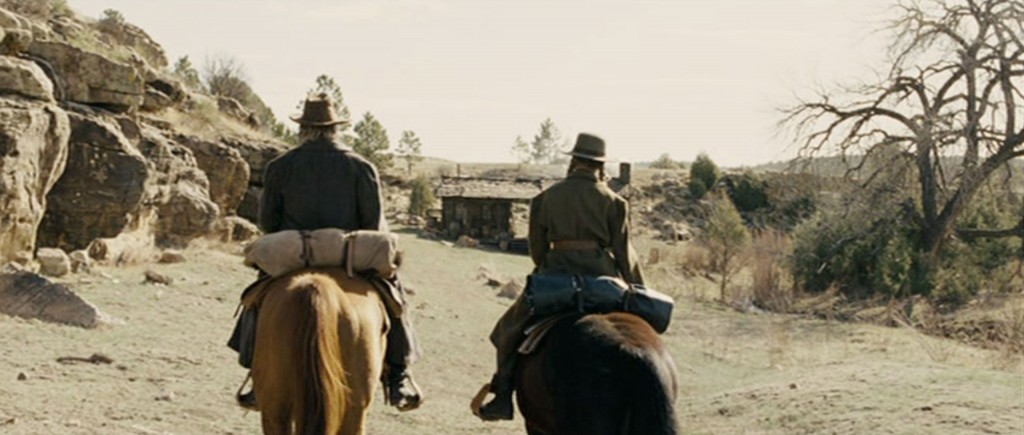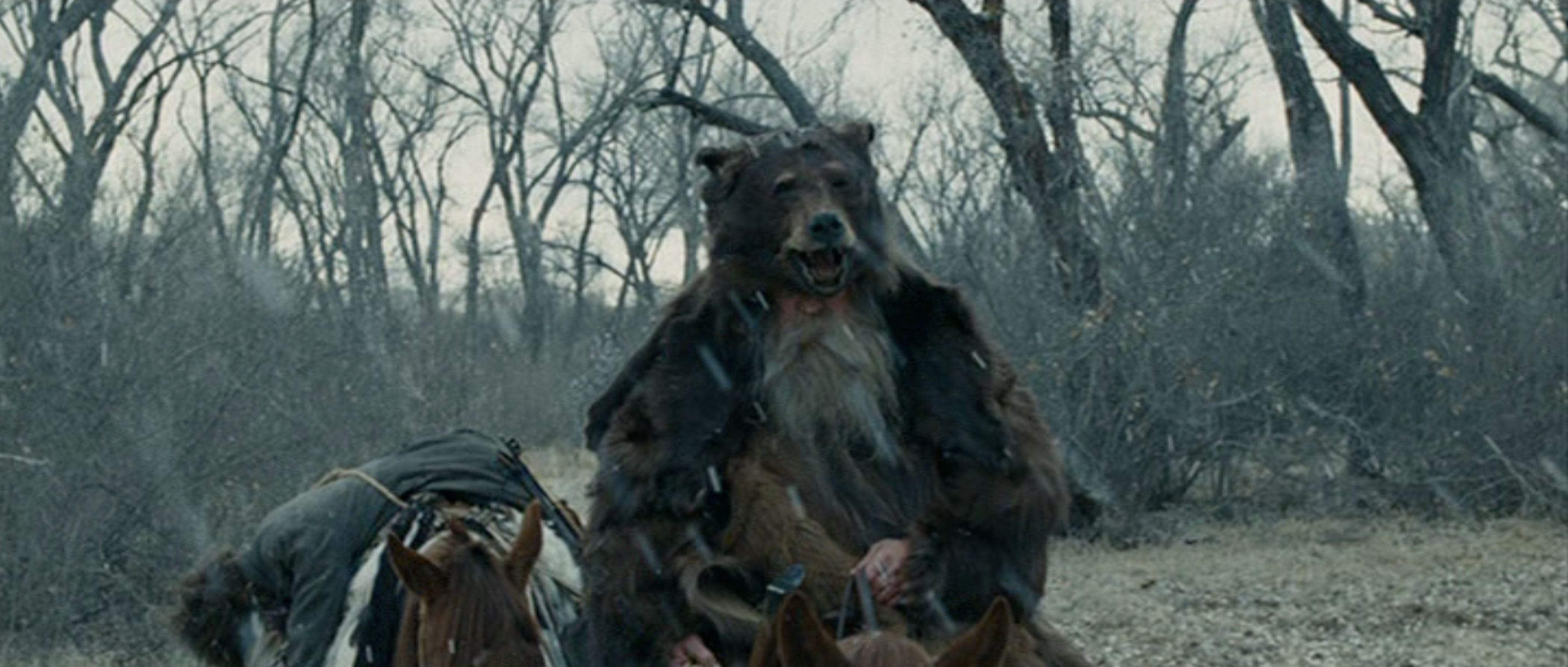True Grit part 6
Faithful reader Bob Glouberman writes:
It seems to me that LaBoeuf isn’t auditioning for the role of father but for the role of suitor, and spurned suitor at that. He is constantly trying to impress her so he can steal a kiss from her. When he showed her his star on their first meeting he was trying to impress her as a suitor not as a father. And when he spanked her, he did so more as a peer and spurned lover. When he leaves Mattie later in the movie, it’s a scene of lovers leaving each other for the last time. If he’s auditioning for the role of father, it’s a creepy molesting kind of father.
I see what Mr. Glouberman is getting at here, although if LaBoeuf wishes to be lover to a 14-year-old girl, and demonstrates his love by whipping her with a stick, he’s got a whole other set of problems.
On the other hand, perhaps he’s right. Perhaps both LaBoeuf and Rooster are auditioning for the honor of Mattie’s hand. Although if they are, Rooster isn’t trying very hard – he’s cagey, inward, egotistical and disinterested. Not to mention about 45 years too old for her. Which, hey, is exactly what some girls look for in a man.
What is probably a more useful theory is that Rooster and LaBoeuf represent two aspects of Mattie’s own personality. LaBoeuf is self-righteous, blustery and proud, and sees himself as part of an honorable tradition, a chivalrous knight, while Rooster is blunt, savage, cruel and brutal. Rooster knows no code and rules are the bane of his existence. The knight, the knave and the maiden have ventured into the wilderness to slay the dragon and make the kingdom safe for civilized life.
If LaBoeuf is a knight, he’s a knight errant – twice in the movie he wanders off, only to rejoin the group later. This is only in the screenplay, LaBoeuf remains with the group in the novel.
Why the change? The Coens want the Mattie/Rooster relationship to be the spine of the movie, and with LaBoeuf flitting in and out of the picture it gives their narrative a tension it might not otherwise have. That is, it gives Mattie an active antagonist – LaBoeuf threatens to derail her whole enterprise, and then later abandons her in the dark wilderness. Without LaBoeuf’s vacillation, Mattie’s got no antagonist between Act I and Act III.
Mattie and Rooster stop at Bagby’s, a store in the middle of nowhere. Earlier, LaBoeuf had scoffed at the idea of using a store for an intelligence source, but Rooster understands something LaBoeuf does not: commerce is a law above all others, especially out here in the wilderness, and everyone, good and evil, has to shop.
That might sound like an unnecessarily Marxist reading for a Western adventure, but then watch what happens next. There is a lengthy sequence involving a dead body. Mattie and Rooster discover it, Rooster forces Mattie to cut it down, Rooster then gives it to a passing Indian for possible sale, and then Mattie and Rooster run into a wandering “doctor” in a bear-skin coat with the same dead body, which he has bought off the Indian for a pair of dental mirrors and a bottle of expectorant.
None of this is in the novel, the Coens invented it, including the bear-skinned doctor, who emerges as the most vivid character in the movie. Why is this sequence here? Three reasons, offhand:
- The Coens want to make a point about the commerce of death, which is one of the themes running through the narrative. Everything is worth something, nothing is free (except the grace of God), and there is money – a great deal of money – to be made in killing.
- The bear-skin doctor provides a suspense beat where we wait for a confrontation with LaBoeuf that does not happen
- The sequence gives the audience something fun to watch while Rooster tells his life story.
This third is perhaps the most important. Rooster’s life story, delivered in a monologue, tells a lot about who he is and the experience he’s encompassed. He practically is the “Old West.” Like Mattie, Rooster narrates his story without any sense of how it sounds to his audience, no sense that he’s describing a life we would see now as wandering, callous, thoughtless and brutal. His wife, when she divorced him, told him “Good-bye Rooster, the love of decency does not abide in you.” Although Rooster seems to have no regrets (at the moment, anyway), the question is raised again and again: is he a good man? Was the Old West tamed by “good men?”
When asked about a place for temporary shelter, the bear-skinned doctor directs them to a cabin owned by “The Original Greaser Bob.” The bear-skinned doctor was invented for the screenplay, and the fact that he directs them to The Original Greaser Bob’s cabin turns out to be an odd piece of detective work. The Original Greaser Bob’s cabin turns out to be exactly where the bad guys happen to be heading for the night! This unfortunate use of coincidence arises in order to give the bear-skinned doctor a narrative purpose; in the novel, Rooster knows about the cabin and its role as a potential bad guy stopover early on.
(“The Original Greaser Bob,” in the novel, is also a member of the bad guy’s gang, but here has been demoted to off-screen shelter-provider. I’m sure the Coens kept the name because they couldn’t think of anything funnier than a man in a bear suit repeatedly saying the name “The Original Greaser Bob.”)


John Wayne’s Rooster called him The Original Mexican Bob …